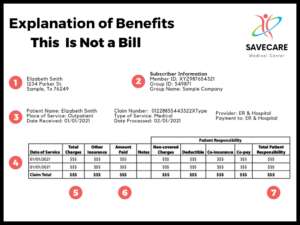
by admin | May 10, 2022 | Health & Wellness, Hot Topics
 “Suck it up,” “cheer up,” “snap out of it,” “but you don’t look sick”- these are just some of the phrases that well-meaning friends and family tell loved ones struggling with mental health issues. Research shows that one in five adults struggle with mental health conditions. Mental health struggles include depression, bipolar disorder, anxiety, schizophrenia, and eating disorders.
“Suck it up,” “cheer up,” “snap out of it,” “but you don’t look sick”- these are just some of the phrases that well-meaning friends and family tell loved ones struggling with mental health issues. Research shows that one in five adults struggle with mental health conditions. Mental health struggles include depression, bipolar disorder, anxiety, schizophrenia, and eating disorders.
Mental illness is also becoming increasingly common among teenagers; studies indicate that approximately one in five teens between ages twelve and eighteen are diagnosed with a mental health disorder. These issues deeply impact day-to-day living and may also affect the ability to relate to others. When your mental health suffers, everything in your life will suffer as a result.
What is Mental Health?
Mental health includes our emotional, psychological, and social well-being. It affects how we think, feel, and act. It also helps determine how we handle stress, relate to others, and make choices.
The fact is, a mental illness is a disorder of the brain – your body’s most important organ. Like most diseases of the body, mental illness has many causes – from genetics to other biological, environmental and social/cultural factors. And just as with most diseases, mental illnesses are no one’s fault. For many people, recovery – including having meaningful roles in social life, work and school – is possible, especially when you start treatment early and play a strong role in your own recovery process.
What Are the Warning Signs?
Each illness has its own symptoms, but common signs of mental illness can include the following:
- Avoiding friends and social activities
- Feeling excessively sad or low
- Feeling helpless or hopeless
- Extreme mood changes
- Thinking of harming yourself or others
- Inability to perform daily tasks like taking care of your kids or getting to work or school
- Feeling numb or like nothing matters
- Overuse of substances like alcohol or drugs
- Having unexplained aches and pains such as headaches or stomach aches
- Changes in sleeping habits or feeling tired and low energy
- Feeling unusually confused, forgetful, on edge, angry, upset, worried, or scared
What Are Some Things You Can Do to Look After Your Mental Health?
- Talk About Your Feelings – Just being listened to can help you feel supported and less alone. Talking with a friend or loved one is helpful but remember, therapists are not only for those in the middle of crisis – they’re incredibly beneficial for people in all stages of life
- Exercise regularly – Exercise releases endorphins, which have mood-boosting effects. Aim to exercise about 30+ minutes at least five days per week
- Eat Well – Your brain needs a mix of nutrients to stay healthy and function well, just like the other organs in your body
- Stay Connected with Family and Friends – Close, quality relationships are key for a happy, healthy life
- Take a Break – a change of scenery or pace is good for your mental health
- Get Outside to Enjoy 15 Minutes of Sunshine – Sunlight synthesizes Vitamin D which experts believe is a mood elevator
- Send a Thank You Note – Let someone know why you appreciate them. Written expressions of gratitude are linked to increased happiness
- Practice Forgiveness – People who forgive have better mental health and report being more satisfied with their lives
- Pursue Your Passions – Enjoying yourself can help beat stress and achieving something boosts your self-esteem
- Sleep – Most adults need around 8 hours of sleep each night so try to make sure you’re getting enough shut-eye
Mental health is undoubtedly just as integral as physical health but it’s something that we often don’t prioritize. We all experience times when we feel stressed or overwhelmed but if these feelings persist, it’s time to slow down and re-evaluate your mental wellbeing.
Most people are afraid to ask for help, but seeking help is actually a sign of strength, not weakness. If you or someone you know is struggling with their mental health, please reach out to a local mental health professional.

by admin | Apr 14, 2022 | Benefit Plan Tips, Tricks and Traps, Hot Topics
 Health insurance is essential to protecting your health but the high cost of coverage may leave you feeling sick. Even after employers pick up a substantial amount of the cost, every year Americans spend thousands of dollars on healthcare while costs are continuing to rise. By taking certain steps, you can stretch your healthcare dollars and still receive the care you need to stay healthy.
Health insurance is essential to protecting your health but the high cost of coverage may leave you feeling sick. Even after employers pick up a substantial amount of the cost, every year Americans spend thousands of dollars on healthcare while costs are continuing to rise. By taking certain steps, you can stretch your healthcare dollars and still receive the care you need to stay healthy.
- Understand How Your Health Plan Works
Review your plan to learn how to maximize your benefits. You need to know what is covered (and what is not!) and what procedures you need to follow to ensure your claims will get paid. Know what your copayment, coinsurance and deductible costs are before your visit.
Most health insurance plans cover more of your costs if you use their preferred or in-network doctors. If you visit an out-of-network doctor or medical facility, you’ll pay more and may end up being responsible for 100% of the bill. Use your insurer’s online tools to search for in-network providers.
- Choose the Right Places to Get Care
Running to the emergency room when you get sick after hours could drain your wallet. All too often, those suffering from minor illnesses or injuries visit the ER when they don’t need to. The ER should be your last resort – consider using more affordable options like telemedicine or an urgent care center instead. You can still get the care you require in off-hours without having to schedule an appointment.
If you need surgery, you may save money by having it done at an ambulatory surgical center (ASC) which is a modern healthcare facility focused on same-day surgical care, including diagnostic and preventive procedures. Typically, these centers charge less than a hospital.
- Use a Health Savings Account (HSA) or Flexible Spending Account (FSA)
Opening a HSA or an FSA is a handy way to save for medical expenses and reduce your taxable income. They are like personal savings accounts but the money in them is used to pay for health care expenses. HSAs are owned by you, earn interest, and can be transferred to a new employer. FSAs are owned by your employer, do not earn interest, and must be used within the calendar year.
- Ask Your Doctor About Remote Patient Monitoring (RPM)
RPM is the use of digital technologies to monitor and analyze medical and other health data from patients and electronically transmit this information to healthcare providers for assessment and, when necessary, recommendations and instructions. This type of monitoring is often used to manage high-risk patients, such as those with acute or chronic health conditions such as those with diabetes, hypertension and heart conditions.
- Use Your Preventive Care Benefits
Many health plans pay the full cost for important preventive care. These regular screenings, exams, and immunizations help detect or prevent diseases and medical problems early when they are easier to treat. Annual check-ups, mammograms (usually after the age of 40), flu shots and colonoscopies (usually 1 every 10 years after the age of 50) are examples of preventive care. These checks can save you a lot of money because they catch problems early.
Health insurance isn’t mandatory – there’s no law requiring you to buy it – but, health insurance is an important part of staying healthy, financially and physically. Since most people who don’t have insurance made that decision based on money instead of what is best for their health, they usually don’t have doctor appointments for the same reason – it’s too expensive. But skipping routine care can end up being more expensive than your premiums, especially if you have serious health issues that aren’t caught early. Think of it like care maintenance: regularly changing your oil might be a hassle but it is essential to prevent a major breakdown down the road.

by admin | Apr 7, 2022 | Hot Topics, Human Resources, Workplace
 2021 was quittin’ time in America. Last year alone over 47.4 million Americans quit their jobs. This year, employees seemingly have the upper hand against employers. The Turnover Tsunami, a.k.a. The Great Resignation, has forced a reckoning with the workplace and few employers have come away unscathed. Organizations are now shifting priorities to make employee well-being and retention the priority. The fact of the matter is, after health insurance, the most desirable perks and benefits are those that offer flexibility while improving work/life balance. So, what is it that employees really want to achieve a better work/life balance?
2021 was quittin’ time in America. Last year alone over 47.4 million Americans quit their jobs. This year, employees seemingly have the upper hand against employers. The Turnover Tsunami, a.k.a. The Great Resignation, has forced a reckoning with the workplace and few employers have come away unscathed. Organizations are now shifting priorities to make employee well-being and retention the priority. The fact of the matter is, after health insurance, the most desirable perks and benefits are those that offer flexibility while improving work/life balance. So, what is it that employees really want to achieve a better work/life balance?
- Hybrid Work – Working remotely some days in the week and at a physical office on others
- Flexibility– Being able to occasionally shift hours that best fit an employee’s life
Why Hybrid Work?
In 2020, people had to change the way they worked overnight and turned their kitchen tables into a fully functioning office. Many employees discovered they were more productive at home. On the other hand, some miss the social nature of the office and working collaboratively in person. Because of these mixed perks of in office vs. working at home, hybrid work can offer the best of both worlds.
According to a survey by the International Workplace Group, 72% of office workers would prefer a hybrid way of working to a full-time return to the office – even if reverting to Monday – Friday routine meant earning more money.
Why Flexible Work?
When the workforce went home because of the COVID-19 pandemic, it caused a change in the expectations of employees and therefore the way companies approach their work environments. The pandemic prompted job seekers to seek flexibility that allows them some level of control of their time. Gene Lanzoni at Guardian said “Time is the most important benefit an employer can provide. For many of us the pandemic afforded us more time, and we’re really not willing to give that back. We had a taste of a more balanced life.”
Balance has never been more important. 60% of families with children have both parents working and for these families, being able to work from home with flexibility is nonnegotiable. Flexibility can allow caregivers to log off from 3 p.m. – 8 p.m. and then come back and do some work after the kids are in bed. When employees have more control of their work schedules, they can free up time to take care of things that pop up in their personal lives – whether it’s running an errand, taking a child to the dentist, or being home for a delivery.
In the end, a flexible schedule contributes to a higher quality of life. Employees don’t have to put their careers on hold to focus on their families or education. This freedom is more valuable in the long run than a paycheck.
Worker retention is more important than ever in 2022. Building a good workplace culture based on the current interests of employees plays a significant role for the success of the company. Businesses now live in an employee-driven job market. It is essential that as an employer you know what benefits your employees value to keep them happy, healthy and working for you.

by admin | Mar 31, 2022 | Hot Topics, Human Resources
 You’ve probably been hearing about the Great Resignation (or however you want to describe it) for months now. Even if you’re not dealing directly with increased turnover, your employees know they have options. Their friends, family, and people they know peripherally or on social media have made the leap and are gleefully announcing it on LinkedIn.
You’ve probably been hearing about the Great Resignation (or however you want to describe it) for months now. Even if you’re not dealing directly with increased turnover, your employees know they have options. Their friends, family, and people they know peripherally or on social media have made the leap and are gleefully announcing it on LinkedIn.
Some job-hoppers may be emboldened by the movement to quit good jobs in the hope of something better—better pay, more flexibility, or more opportunities for advancement. Some have simply been pushed to the brink by dead-end jobs, lousy company culture, or ineffective managers. Others have given up trying to “have it all” and left the workforce completely.
But what if employers could capitalize on this current “I quit” mood? If people are leaving jobs for something better, offer something better! Here are some ideas to create an engaged and committed workforce:
1. Understand and Be Responsive to Employee Needs, Motivations, and Priorities
A paycheck may be the reason everyone has a job in the first place, but it’s not the only reason people choose to work or decide to work for one employer over another. Your employees stick with you because there’s something in it for them besides the money. The job is useful to them. Knowing why it’s useful enables you to keep employees satisfied and, better yet, make their jobs even more appealing.
2. Prioritize Employee Development
A work environment in which people gain knowledge, learn new skills, and advance in their careers speaks more clearly and loudly than any marketing message can. People like working where they can grow and develop. According to a LinkedIn report, companies “that excel at internal mobility are able to retain employees nearly twice as long as companies that struggle with it.” And a better trained workforce is also a more productive and profitable workforce!
3. Reward Success
In fact, reward anything you want to see more of. Whether large or small, the rewards have to be meaningful. Ideally, figure out what type of reward speaks to each employee. For some, acknowledgment in a company meeting will make their heart sing. For others, receiving a token of your appreciation, such as a coffee gift card, will be more meaningful.
4. Allow for a Healthy Work-Life Balance
Flexibility is a big selling point for employees looking for better balance between work and life. Your employees have other commitments they need to attend to. Some are caring for young children or other family members while navigating daycare and school closures or multiple appointments. Give employees the time to see to those commitments and have a life outside of work, and you’ll get more from them when they’re on the job. Options may include remote or hybrid work, paid time off, flex hours, four-day workweeks, alternative schedules, and reducing workload. Remember, however, that policies are only as good as the practices around them. Ensure that employees don’t need to jump through hoops to request time off. Remind managers to be responsive to requests for time off and on the look out for signs that employees are feeling overwhelmed.
5. Conduct “Stay Interviews”
Don’t wait until people are leaving to investigate what could have inclined them to stay. Talk to employees now about what’s going well, what pain points they’re experiencing, and what could be done to take the relationship to the next level. Stay interviews enable you to address problems and unfulfilled wishes before they drive people out the door.
By Lisa DeShantz-Cook
Originally posted on Mineral

by admin | Mar 9, 2022 | Hot Topics
 Let’s say that you visited the doctor and you are wondering how much that visit is going to cost. A short while later, you receive something in the mail that looks like a bill – and even says “amount you owe” at the bottom. However, it doesn’t have a return envelope or tear-off portion for the bill. Confused? You’re not the only one!
Let’s say that you visited the doctor and you are wondering how much that visit is going to cost. A short while later, you receive something in the mail that looks like a bill – and even says “amount you owe” at the bottom. However, it doesn’t have a return envelope or tear-off portion for the bill. Confused? You’re not the only one!
Most likely, you’ve just received an Explanation of Benefits (EOB) from your insurance company. The most important thing for you to remember is that an EOB is NOT a bill. It is essentially “one big receipt” that explains your visit. It shows what was billed, how much you can expect your health plan to pay, and what you – the patient – have to pay. It is always important to review your EOB to make sure it is correct.
An EOB is a tool that shows you the value of your health plan. It will detail the cost of the services you received and how much your insurance will pay.
How do EOB’s work?
The health care provider will bill your insurance company after your doctor visit. Then, your insurance company will send your EOB. Later, you will receive a bill for the amount you owe. However, if the bill does arrive before the EOB, don’t pay it yet. Wait until you have the EOB in hand so you can compare it to your medical bill.
While an EOB will differ from one insurance company to another, they typically all include the following information:
- The Account Summary – lists your account information with details like the patient’s name, date(s), and claim number.
- The Claim Details – lists the services provided and the dates of the services.
- The Amounts Billed – details the cost of the services and what costs your health plan did not cover. It will also include any outstanding amount you are responsible for paying. If there is a portion that is not covered by insurance, the reason why will also be listed.
Remember, insurance companies rarely pay 100% of the bill. You will need to pay any applicable deductible, copay and coinsurance.
Deductible: The amount you pay for health care services before your insurance begins to pay anything.
Copay: A flat fee that you pay on the spot each time you go to your doctor or fill a prescription.
Coinsurance: The portion of the medical cost you pay after your deductible has been met. Coinsurance is a way of saying that you and your insurance carrier each pay a share of eligible costs that add up to 100%.
Why is Your EOB important?
Medical billing companies sometimes make billing errors. Your EOB is a window into your medical billing history. Review it carefully to make sure that you did receive the service being billed and that your procedure and diagnosis are listed and coded correctly.
EOBs can help you understand how the health insurance system works and provide transparency in the complicated finances of health care. While the EOB may be complicated, understanding it can help ensure that you and your family get the most out of your health insurance. Knowing what an EOB is and what is included on the statement ensures that you stay in control of your health care finances.

by admin | Dec 7, 2021 | Hot Topics
 “Children laughing, people passing, meeting smile after smile” stirs happy memories of singing Christmas carols for some, but for others, the holidays can be the most stressful and loneliest time of the year. The holidays often present a dizzying array of demands – shopping, baking, and entertaining to name a few. For those dealing with mental health conditions like depression or or anxiety, the holidays can be even harder.
“Children laughing, people passing, meeting smile after smile” stirs happy memories of singing Christmas carols for some, but for others, the holidays can be the most stressful and loneliest time of the year. The holidays often present a dizzying array of demands – shopping, baking, and entertaining to name a few. For those dealing with mental health conditions like depression or or anxiety, the holidays can be even harder.
Holiday depression can be misinterpreted as being nothing more than the winter blues. So, when it comes to the holidays, people are more focused on their physical health issues instead of their mental health issues. They are more interested in losing weight than taking care of their mental health. Being unaware that there is a problem can make holiday depression evolve into major depression. Counseling and medication are good avenues to seek if you are living with symptoms of depression.
Here are 9 tips that you can use to help you with holiday depression:
- Be realistic – Holidays change just as people change. Kids grow older, people move, and new people will become a part of your life. Focus on those connections, new traditions and remember past holidays with fondness while still enjoying the one right in front of you.
- Schedule Some Down-Time – Even 15-20 minutes a day to enjoy some quiet time, take a bath, listen to music or read a book can do wonders for your stress levels. Plus, it’s ok to say no: you don’t have to attend every party or family event.
- Don’t Isolate Yourself – Look for ways that you can enjoy social connections, even if you aren’t able to go home for the holidays. If you are feeling lonely, ask a friend to come over for a heart to heart or volunteer for something that interests you.
- Drink Only in Moderation – Alcohol is a depressant and can exacerbate negative feelings.
- Exercise Regularly – While hitting the gym can be tough when you are stressed and busy, try going for a short walk. Did you know that exercise can help relieve symptoms of depression?
- Focus on the Positives – Today is a gift. That is why it’s called the present! Being positive and practicing gratitude has a strong positive impact on psychological well-being. It increases self-esteem, enhances positive emotions and makes us more optimistic.
- Keep Expectations Manageable – Try to set realistic goals for yourself and your family. Pace yourself. Organize your time and make a list and prioritize the important activities.
- Let People Close to You Know What’s Going On – Don’t try to hide your holiday depression from your friends and family. Hiding your problem can make your mental health worse. Instead, be honest with them and let them know what you are going through and make sure you let them know that you don’t expect them to make it better.
- Seek Professional Help if You Need It – You may find yourself feeling persistently sad or anxious, unable to sleep, unable to face routine chores or irritable and hopeless despite your best efforts. If these feelings last for a while, talk to your doctor or a mental health professional.
Avoid beating yourself up if you are not full of the “joy of the season.” With some planning, self-care and social connections, it’s possible to tackle depression around the holidays and still enjoy the season. Be gentle with yourself, have realistic expectations, and don’t abandon your healthy habits just because it’s the holiday season. By actively working to manage your mental health, you will be able to make the best of the holidays!
If you are experiencing these symptoms over a period of several weeks, you may be depressed. Talking with a mental health professional or taking a mental health screening test can help you understand how well you are coping with recent events. Seek help.

 “Suck it up,” “cheer up,” “snap out of it,” “but you don’t look sick”- these are just some of the phrases that well-meaning friends and family tell loved ones struggling with mental health issues. Research shows that one in five adults struggle with mental health conditions. Mental health struggles include depression, bipolar disorder, anxiety, schizophrenia, and eating disorders.
“Suck it up,” “cheer up,” “snap out of it,” “but you don’t look sick”- these are just some of the phrases that well-meaning friends and family tell loved ones struggling with mental health issues. Research shows that one in five adults struggle with mental health conditions. Mental health struggles include depression, bipolar disorder, anxiety, schizophrenia, and eating disorders.




